

Online Marketing: Definition, Benefits & Strategies [2025]
Online marketing is one of the most popular forms of promoting your business or start-up using digital marketing channels such as SEO, email, social, ad campaigns, and so on.
Compared with traditional marketing, it offers you the chance to reach a wider audience, regardless of location or time. This practice will help you increase brand awareness, build connections with potential customers and turn them into loyal advocates of your brand.
In this guide, we are going to see:
- What internet marketing is
- The benefits of using it
- How to do it the right way
Without further ado, let’s get right to it.
What is Online Marketing?
Online or internet marketing is a strategy that entails using digital channels to reach your audience.
In comparison to traditional marketing, this method is more cost-effective and has better chances of increasing brand awareness through personalized messages.
To get started with this marketing strategy, business owners need a website and the right tools to create marketing campaigns that will capture, nurture and convert their potential customers.
Benefits Of Online Marketing For Businesses
Apart from cost-efficiency, using this digital marketing strategy has a plethora of benefits you need to look into.
To sum them up, here are the advantages you will reap if you get started with it:
- Better user experiences through personalized campaigns
- Measurable results via marketing metrics
- A plethora of online marketing channels to reach your audience
- Optimization options to increase your conversion rate
- Better relationships with your target audience
Apart from these, using online means to promote your business is the trend of our times. As you may have noticed, the majority of consumers use social media and email to get in touch with their favorite brands and receive updates about new products and offers.
Missing out on the opportunity to leverage this trend will be a big loss for any large enterprise or small business that wants to scale. So now that we explored some of the benefits of internet marketing, it’s time to discover the best strategies you can use.
Best Online Marketing Channels
Here are the best digital marketing channels that we are going to cover in this post:
- Search engine optimization (SEO)
- Content marketing
- Email marketing
- Social media marketing
- Paid advertising
- Webinar & podcast marketing
- Mobile marketing
- Affiliate marketing
If you’re interested in a particular one, make sure to click on it to find out more. Otherwise, let’s start from the beginning.
How To Do Online Marketing
Before we begin, it is essential to know that this type of marketing requires content. This can be anything from blog posts, videos, and more, meant to educate your target audience and convince it that your product/service is worth its time and money.
From creating valuable pieces for your customers to distributing to them, let’s find out the strategies that will help you succeed, starting with SEO.
1. Search Engine Optimization (SEO)
Getting started with SEO isn’t rocket science but it requires you to be familiar with a few things to fully grasp it. In short, this strategy entails increasing your traffic through organic search engine results.
To do so, though, you need to make sure that your web pages appear as high as possible in search engines. Before we learn more, let’s check some of the benefits of this channel:
- Offers quality traffic from interested users
- Increases website and business credibility
- Enhances your online presence
- Has a great return on investment (ROI)
- Sets the foundation for other strategies (content, PPC, etc.)
How To Do SEO
Understanding search engine optimization will help you make a difference by discovering what internet users are searching for.
So, before you start with content creation, you need to find the right keywords to target. For example, let’s say you have a hair product eCommerce business.
To find the right terms to target, you need to start asking questions like:
- What hair products are people looking for?
- What is the demographic for each one of them?
- Which are the problems they seek to solve?
- How do people ask these questions (what words do they use?)
Based on these questions you can select the right keywords for your business. Here, targeting terms like “best shampoo for dry hair,” or “alternatives to X” are great ways to start. Of course, not every keyword offers the same opportunities.
To maximize your SEO campaigns, you need to check two things:
- Search volume: an indicator showing how many people are searching for a specific term.
- Keyword difficulty: how long it will take to appear high in search engine results. The higher the volume, the more time it takes to rank.
The next thing you need to do is to determine the type of content you have to deliver. Based on search intent, you can focus on blog posts, videos, tutorials, or even podcasts. It all depends on what satisfies your audience’s queries.
To fully understand how to build an effective SEO strategy you can check out this beginner’s guide.
Tools You’ll Need: Ahrefs, Google Trends, SEMRush, Google Search Console
Example – Keyword Research Through Ahrefs
Below you can see a simple keyword research example performed through Ahrefs.
Here, we added the potential keyword we wanted to target for our hypothetical hair product eCommerce store.
As you can see, the tool displays the difficulty and the volume:
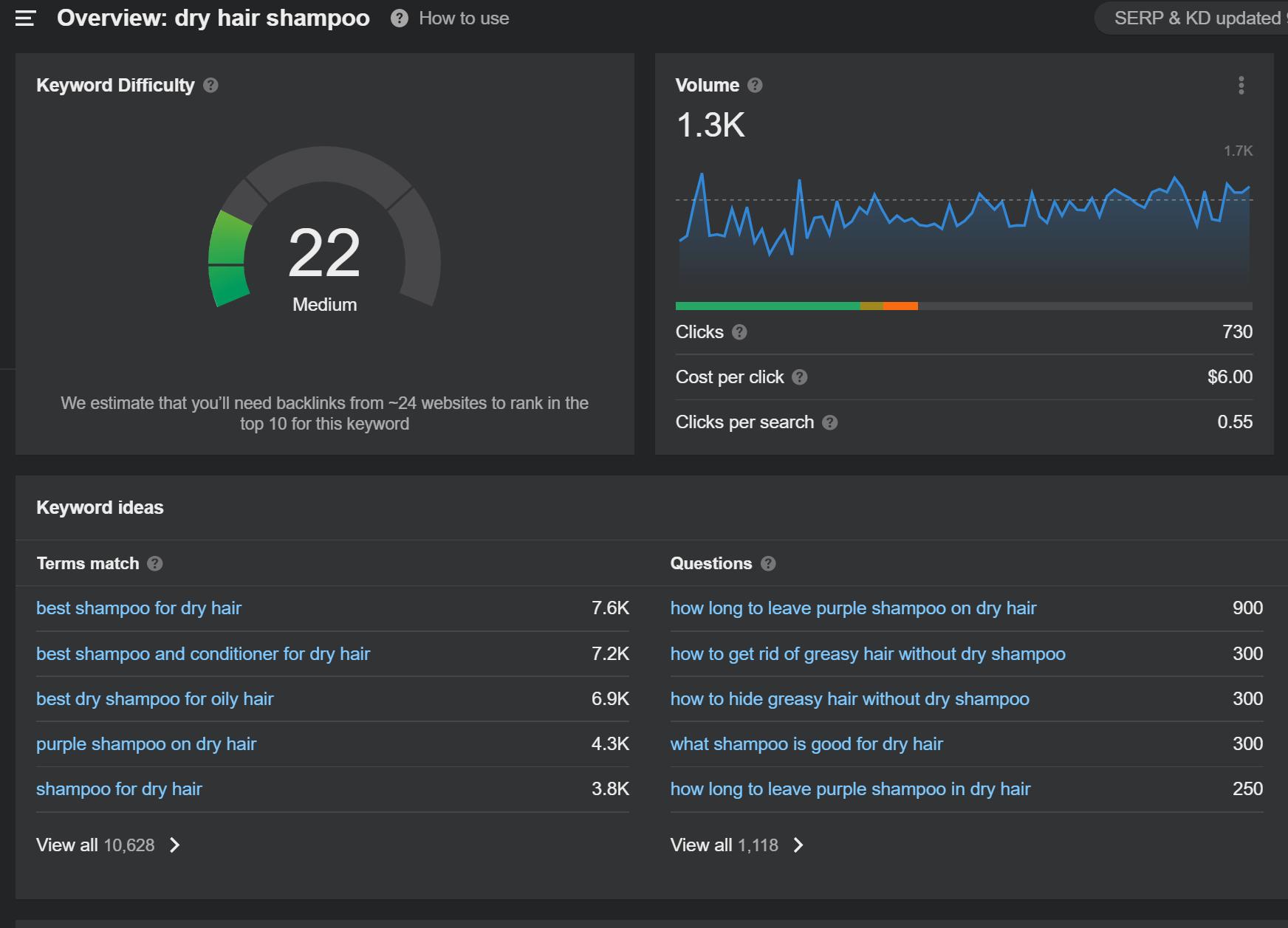
More specifically, “dry hair shampoo” has a medium KD and 1.3K monthly searches which make it a good opportunity to target. Apart from that, tools like this will provide you with keyword ideas, and questions to help you create more targeted pieces of content for your audience.
2. Content Marketing
After finding your keywords it’s time to plan your content strategy. Creating valuable pieces of content will help your business grow faster, building connections with your audience and solving their pain points without “forcing” them to buy something.
That’s the magic of great content after all. If you do it right, your audience will keep coming for more, and, ultimately, take the desired action organically.
How To Do Content Marketing
To do content creation the right way you need to understand what your audience wants to read. This is possible through keyword research and existing customer feedback collection.
You can start gathering demographic data to optimize your content, both in terms of language (focus on readability for young audiences), incentives, and supporting materials.
When you have your outline, you can create an editorial calendar to keep everything in one place. This will help your content team be productive and know what they need to write to engage your audience. Then it’s time to craft your content piece.
Below, you’ll find the most popular forms of content you can create for your business:
- Blog posts
- Videos (tutorials, explainers, etc.)
- Case studies and infographics
- Webinars and podcasts
Based on your goal, you can combine different forms of marketing content to give your audience the best possible experience. For instance, infusing your blog posts with videos is a simple way to showcase your products and provide tips.
The last step is to distribute it by selecting the best channels to do so. Email marketing and social media are some of the most cost-effective ways to promote your content. We’ll get to them in a bit.
Want to know more about content creation? Make sure to check our step-by-step content marketing guide.
Tools You’ll Need: WordPress, Grammarly, Yoast, Google Docs, Ahrefs
Example – Moosend’s Blog
Adding content to your blog will help your target audience learn more about your product and find solutions to common problems.
Here, Moosend uses its posts to educate users on email marketing topics, such as how to create newsletters, popup forms, email copy, and more.
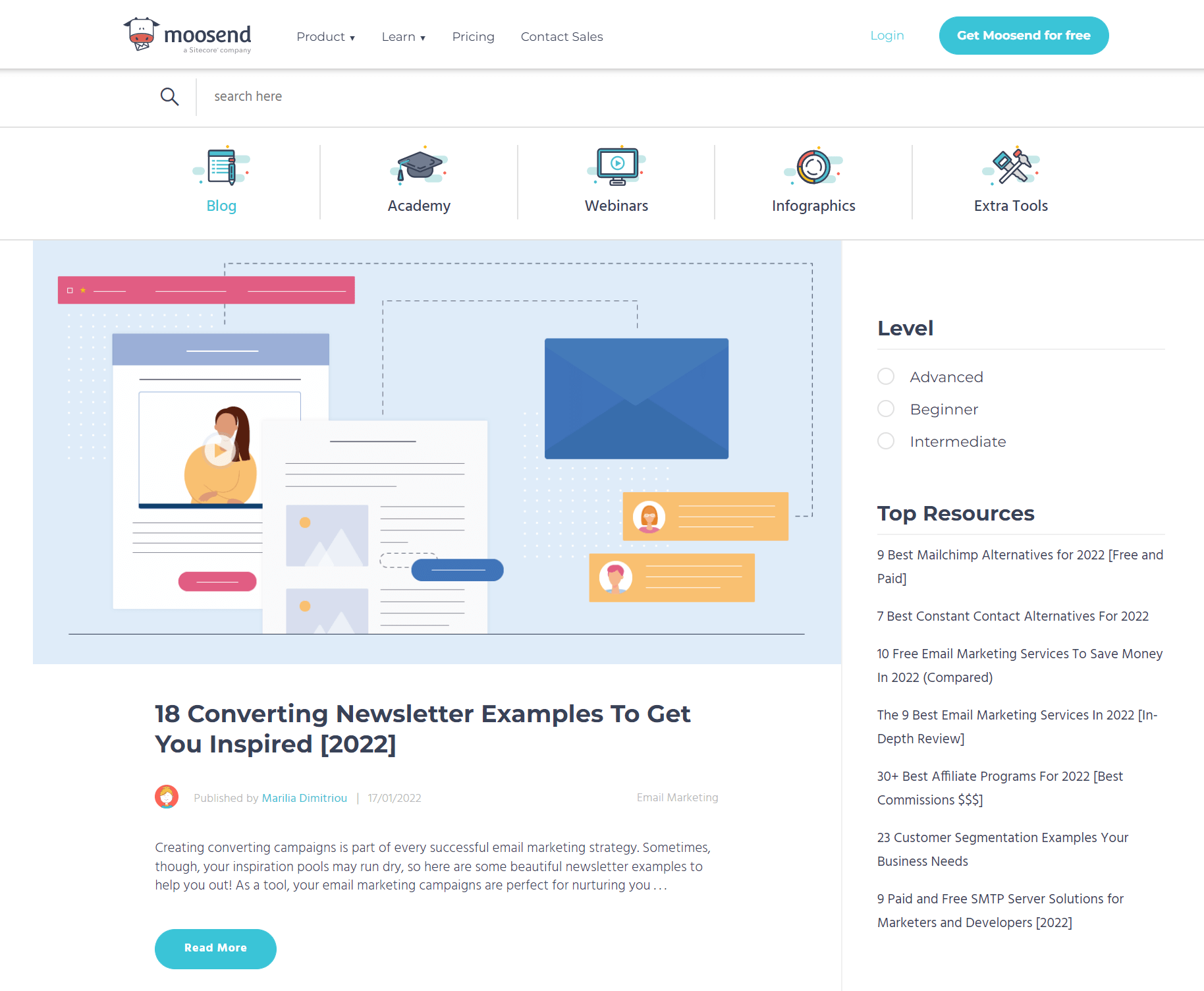
3. Email Marketing
Speaking of content distribution methods, did you know that email is one of the easiest and most cost-effective online marketing tools to use? With an ROI of $42 for every $1 spent on it, you can send your new pieces of content to your subscribers to nurture and convert them.
But how do you create a successful email marketing strategy in the first place? Let’s see.
How To Do Email Marketing
To enjoy the benefits of this digital marketing channel you have to build an email list. You can start by adding a newsletter signup form on your homepage and product pages or create dedicated landing pages for lead generation.
Whatever you choose, you are going to need an online form builder to craft the popup and an irresistible incentive/lead magnet to capture your visitor’s email address. Creating a list is easy but make sure to check the best practices to do so, like adding a double opt-in to keep it free from invalid emails and spam accounts.
Moving on, now you can create your first email marketing campaign to promote your content. Using a dedicated email tool will allow you to:
- Create professional designs from scratch or use a newsletter template
- Automate your process through marketing automation
- Schedule your campaigns based on subscriber timezone
- Monitor important metrics (opens, CTR, conversion rate)
These are only a few of the things you can do with an email marketing tool like Moosend or Mailchimp. Keep in mind that services that are difficult to handle and pricey will hinder your email marketing efforts. So before you choose one, make sure you do your research.
If you need a great tool to get started, you can try Moosend’s email marketing automation software to take the email, form, and visual workflow editors out for a spin.
For more on how to structure the perfect email marketing strategy for your business, check out our beginner-friendly guide.
Tools You’ll Need: Email service provider (ESP), marketing automation software, online form builder, automated workflows
Example – The Body Shop Email Campaign
Emails are perfect for keeping in touch with your new customers. Based on your goals and KPIs you can craft a plethora of different marketing messages to:
- Welcome your new subscribers
- Re-engage your old customers
- Restore your revenue through cart abandonment messages
- Educate and share tips
- Promote special offers and deals
Below, you can see how The Body Shop uses this online marketing channel to promote its special 20% off incentive:
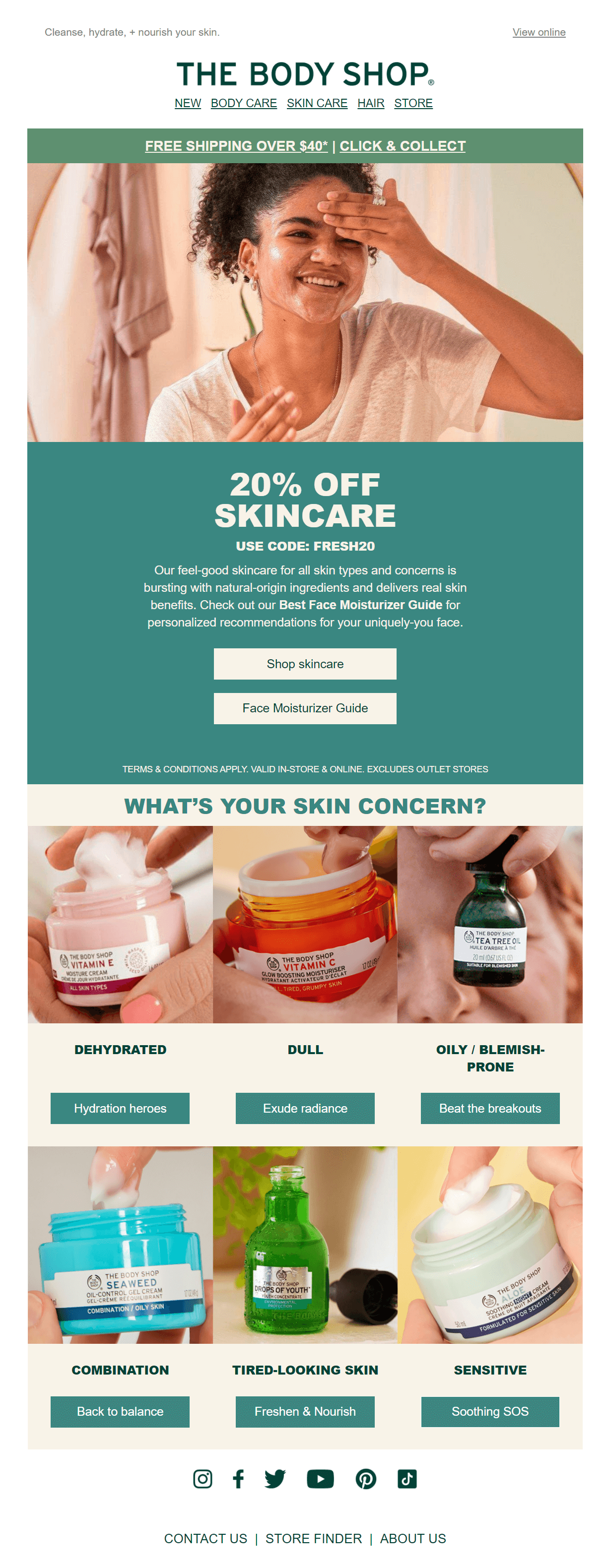
While it may look like a piece of cake to create a simple newsletter like the one above, the art of crafting effective emails entails various steps, starting with an effective email subject line.
Then, you have to add valuable copy and place your CTAs strategically to increase your click-through rates and conversions. If you have no experience creating emails, you can see how it’s done in this simple guide on how to create newsletters.
The Body Shop uses Moosend’s email builder to craft its email sequences. You can mimic its example by signing up for an account and trying the tool yourself.
4. Social Media Marketing
Social media platforms have turned into one of the most efficient brand awareness and promotion tools.
By creating targeted content, you can engage a large audience and boost your conversions regardless of time and space. Let’s see more below.
How To Do Social Media Marketing
As mentioned above, this form of marketing entails the creation of engaging social content for your target audience. However, you have to select the appropriate social media platforms to make it work.
The first step is to find the ones your audience likes to use. Here you can see some of the most popular options used by millions of people:
When you find the ones your audience likes to use, you can start posting regularly. Your content should be engaging and valuable for your followers. Apart from that, you can also leverage the power of influencer marketing. This is a great way to increase your credibility and brand awareness by collaborating with influential people in your industry.
These are some of the fundamentals of social media marketing. If you want to learn how to create a winning social strategy, don’t hesitate to check out our comprehensive guide.
Tools You’ll Need: Social media platforms, Buffer, Sproutscocial, Hootsuite
Example – Organic Social Media Posting
Below, you can see an example from Slim Jim’s Instagram profile. The brand uses posts like this one to engage and entertain its followers. As you can see, the post already has 460K views and multiple comments.
While unconventional, this type of content is favored by Slim Jim’s audience who will participate in playful banter with the brand:
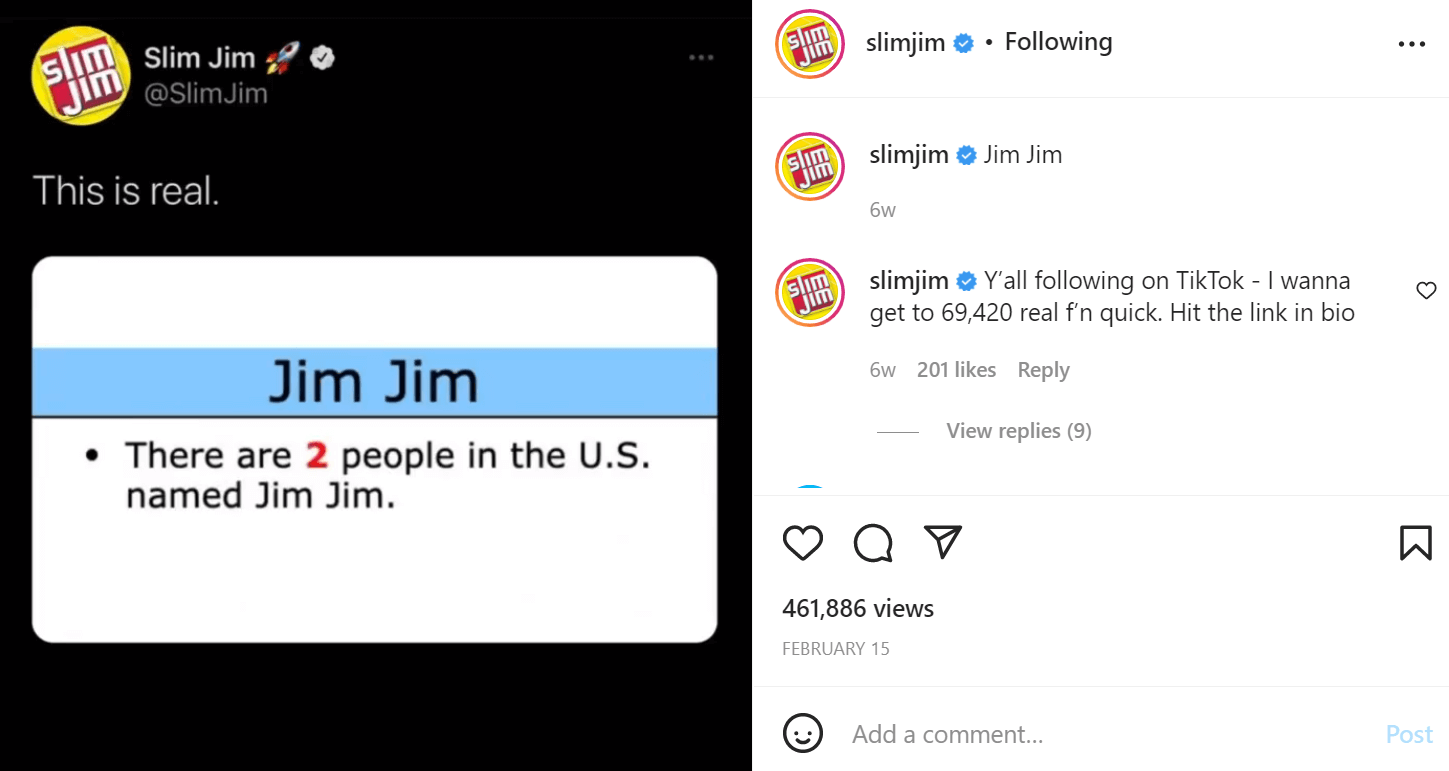
5. Paid Advertising
Apart from the organic traffic streams (social media posting, content marketing, etc.) you can also use paid means to promote your brand and products.
This is possible through Pay-Per-Click advertising (PPC). As the name suggests, this online advertising strategy requires you to create a campaign and pay for each click you receive.
How To Run PPC Ads
As mentioned above, this strategy entails the creation of an ad. Most social media platforms offer you the option to run a variety of campaigns, with the most popular ones being Facebook Lead ads and Google Ads (formerly Google Adwords).
When you pick your channel, you can start targeting your audience with specific messages. For instance, if your audience is men between the ages of 40 and 60 you can create a Facebook ad to increase brand awareness and conversions.
To run a Google Ads campaign, you need to target specific keywords. To do that you have to make a PPC keyword list that is relevant to your business/product terms.
While you have to pay to use this channel, PPC marketing is a great way to expand your new customer base with targeted content. So even if you pay, let’s say, $4 per click, your PPC campaign may result in a $100 sale, which is a $96 dollar profit.
Display advertising is one of the most popular tactics that every business owner can use to boost their brand awareness effortlessly.
Tools You’ll Need: SEMruch, Google Ads Editor, SpyFu, Leadpages
Example – Google Ads Campaign
Google Ads is a useful tool that all industries can leverage. To improve the performance of your Google Ads campaign, it’s essential to focus on Google Ads optimization techniques.
In the following example, you can see how real estate agencies use it to target keywords like “properties for sale in California:”
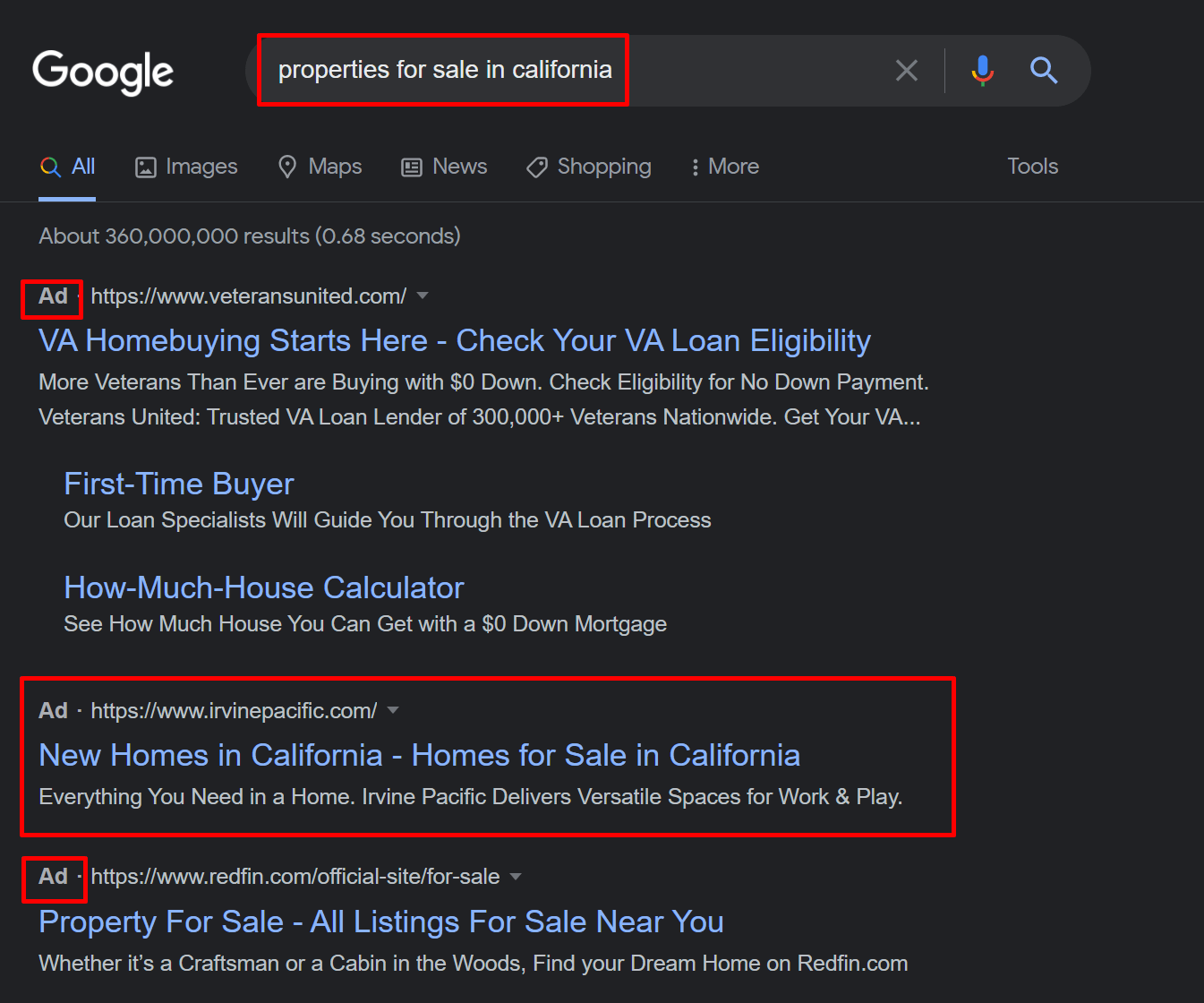
The more relevant the term you’re targeting to the user’s query, the more chances they have to click on your campaign and take the desired action that will lead to conversion.
What about SEM?
Apart from SEO, you also have at your disposal a marketing tactic called Search Engine Marketing.
SEM is a form of online marketing that lets you boost your organic traffic and visibility through paid ads. As you can guess, search engine marketing focuses on optimizing paid adverting campaigns to boost conversions.
Here are some of the most popular SEM campaigns you can use:
- Display ads
- Gmail ads
- Youtube ads
- Search ads
Interested in learning more about SEM? Check out this comprehensive guide to find out what it entails.
6. Webinar & Podcast Marketing
These two forms of marketing aim at educating potential and new customers to turn them into loyal advocates of your business.
When it comes to webinar marketing, there are different types to choose from based on your goals:
- List building events to expand your subscriber base
- Thought leadership webinars to build authority
- Lead nurturing events to educate the viewer
- Conversion webinars to boost sales
You can use your content to establish yourself in front of your audience and increase your brand awareness. Similarly, podcast marketing is great for building a community and educating it about different topics in your niche.
How To Do Webinar Marketing
Hosting a great webinar requires the right equipment (internet connection, webcam, etc.) and a few handy tools to make sure everything runs smoothly.
The first thing you need is to find a topic for your audience and select the right webinar type depending on where your audience is in the customer journey.
Next, you have to create your agenda and your talking points along with a strong value proposition and call-to-action. When you have everything in place you can use a webinar platform to host it.
Of course, you will also need to promote your event. The easiest way to do it is to use email marketing and social media to boost your registration rate. Combining your online marketing tools is a must marketing tactic you need to keep in mind if you want to scale your business.
If you want to learn more about webinar marketing, make sure to check out this guide.
Tools You’ll Need: Livestorm, WebinarJam, Email marketing tool, Social media platforms
Example – Thought Leadership Webinar
To establish itself as a thought leader, Microsoft hosted a webinar called “Speaking of Security: Privacy Compliance.”
This webinar is meant to increase the company’s authority and provide its audience with valuable information about a serious matter:
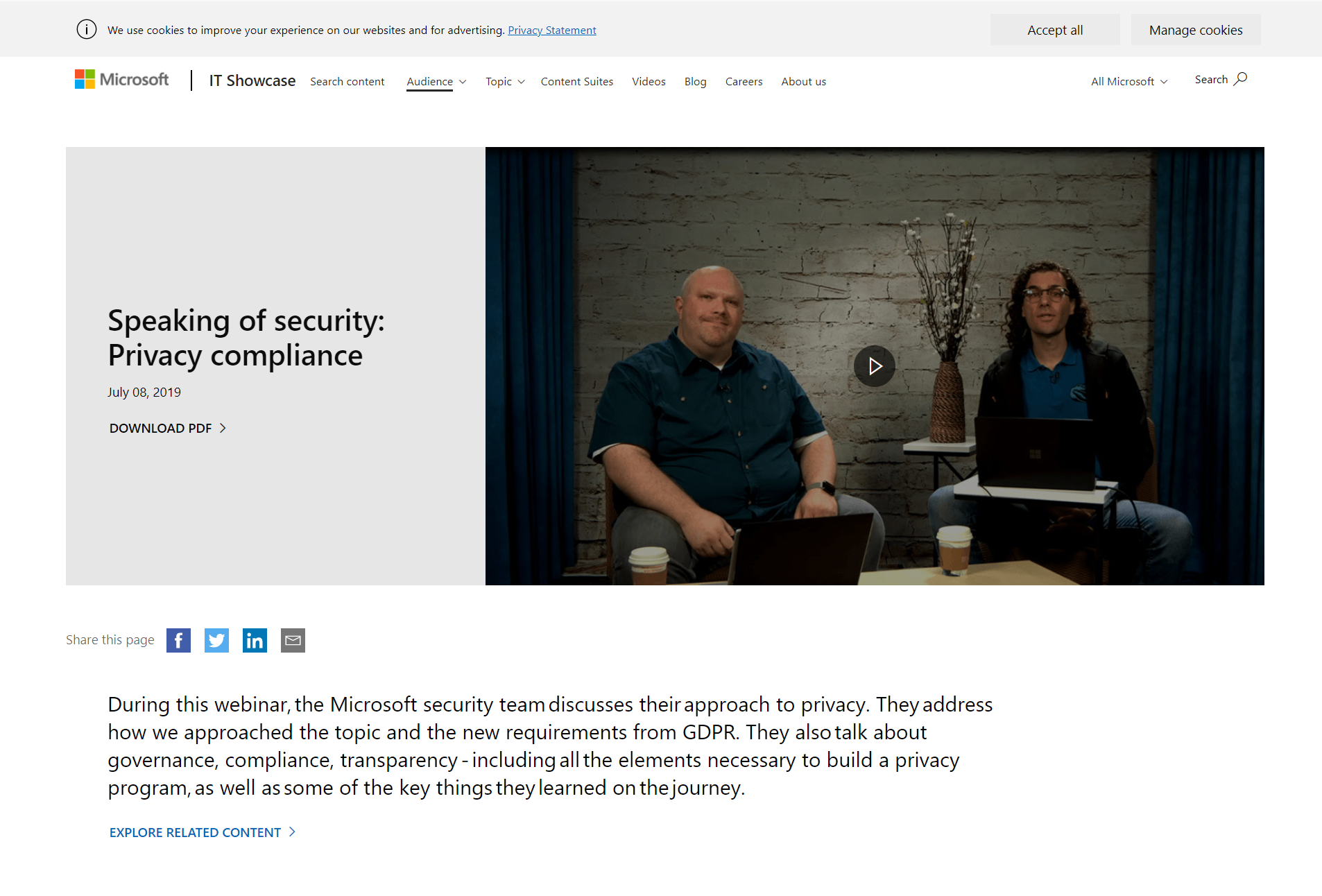
How To Do Podcast Marketing
Starting a podcast is fairly simple. The first step is to find a podcast topic to commit to. Then, choose a name and create an attractive description to intrigue your audience.
Next, you need to select your audiovisual elements to make your podcast stand out, like your podcast artwork and music.
Moreover, you also have to buy your equipment, including your podcast software and hosting service to set it up. After you have everything ready, you can start recording your episodes and then promote them through social media and email.
If you want to find out more about how to create a podcast, check out this resource.
Tools You’ll Need: Music production and audio editing software, Podcast hosting service
Example – Marketing School Podcast
Marketing School is a collaborative podcast between Neil Patel and Eric Siu, offering actionable advice around marketing.
The duo covers a variety of topics to help business owners improve their marketing tactics and drive positive results:
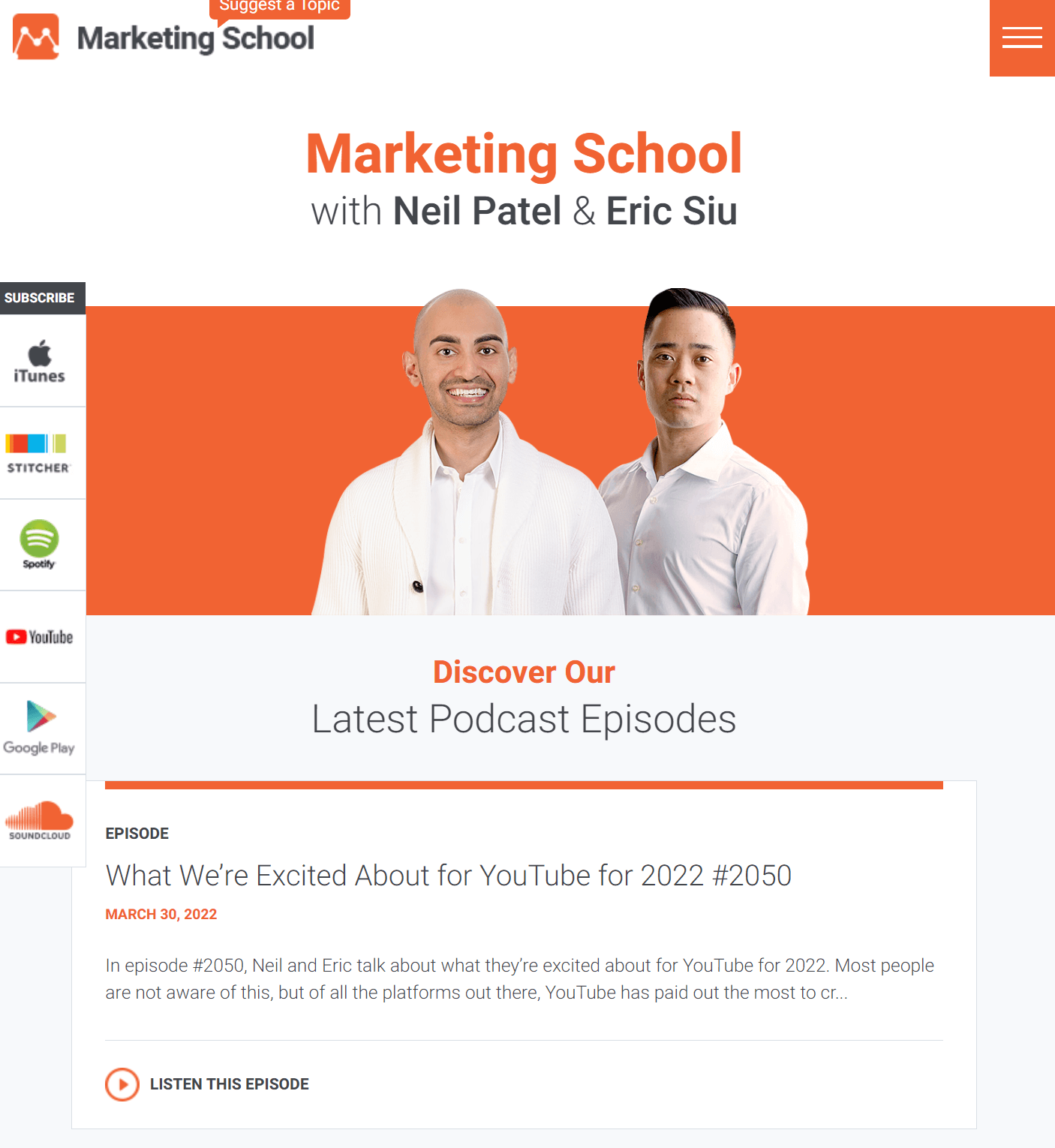
7. Mobile Marketing
Here is another popular digital marketing channel you can use to boost your engagement.
Mobile marketing aims at reaching your audience on their mobile devices, including smartphones and tablets. According to data, 83.72% of people have a smartphone today, so using this online marketing tactic to promote products and special offers is a no-brainer both for retail and eCommerce businesses.
How To Do Mobile Marketing
First off, this form of marketing includes a variety of different types. Every single one of them has different benefits to consider. Let’s take a look at some of them:
- Mobile-optimized websites: make your web pages responsive to ensure that your visitors will have a great user experience.
- In-app marketing: leverage this form of marketing to promote your products on existing apps. You can use banners and video Adwords to increase your visibility.
- Location-based marketing: use GPS to target your audience with location-based content for a more personalized experience.
- SMS marketing: target your customers with text messages to give them special offers and coupons.
Of course, there are more mobile marketing tactics to consider like mobile video marketing. What you choose depends on your goals and KPIs.
For more tips and strategies, you can check out this guide by Neil Patel.
Tools You’ll Need: Social marketing tools for mobile, Google Analytics, Mobile Pay, etc.
Example – Promotional SMS Campaign
Sending special promotions to your customers through text messages is a great way to get them to act.
Also, compared to emails, text messages can be seen as a more friendly and immediate way to approach them. There’s a catch, though. Before you send them your campaign, make sure that they have opted to receive it; otherwise, you may find yourself getting blocked.
Below, you can see a great example by Jenni Kayne, giving a 20% as a thank you for being a member of its community:
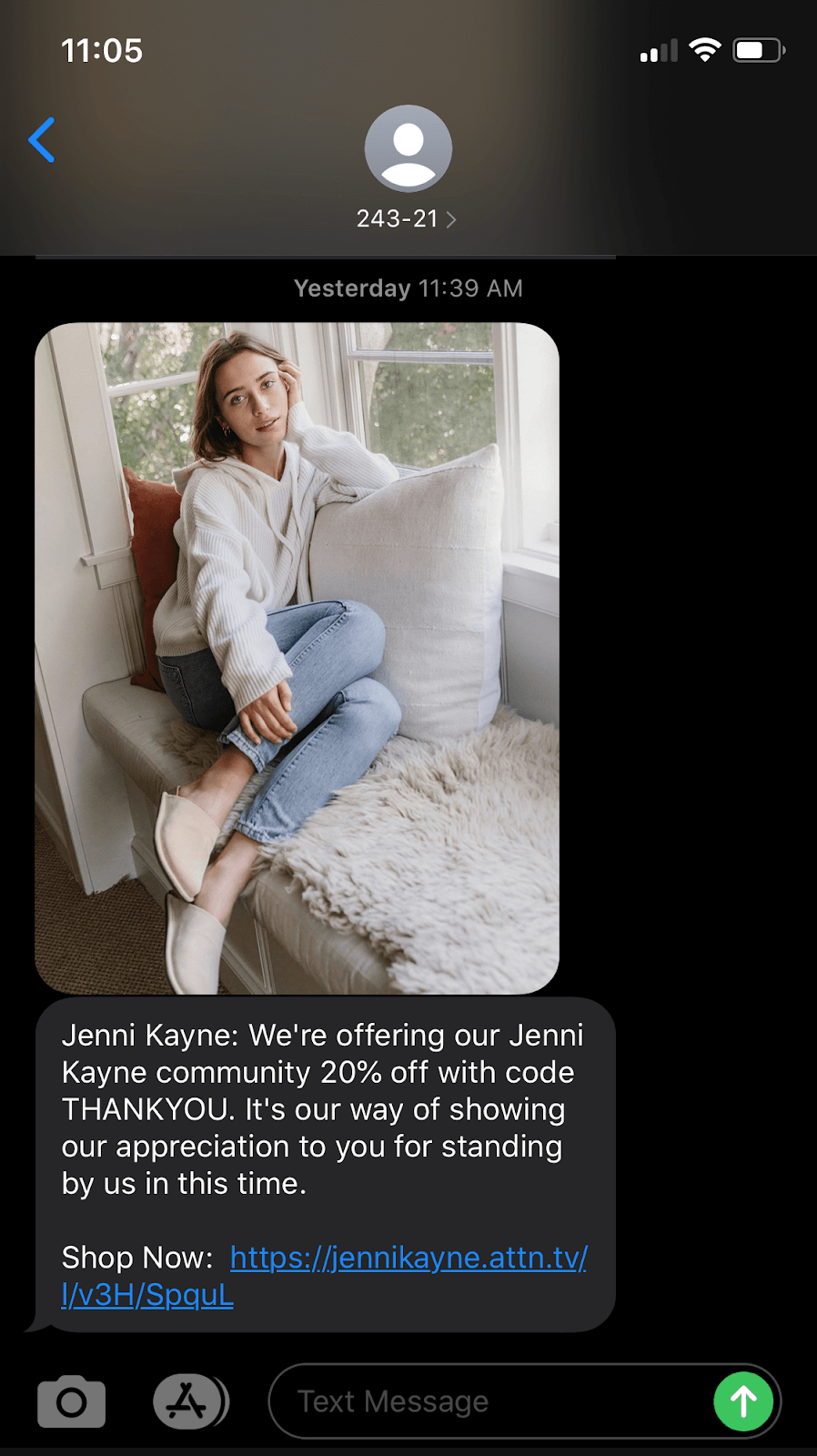
Make sure to learn everything about SMS, too, by visiting our beginner-friendly SMS marketing strategy guide.
8. Affiliate Marketing
This form of marketing is based on the idea that someone else will promote your product/service in exchange for a commission.
Affiliate marketing is a very popular method of earning money online, so a lot of people will turn into affiliates to power up their passive income.
How To Create An Affiliate Program
To leverage the power of affiliate marketing, you need to select the products you want to add to your program. Usually, those with a high average order value (AOV) are a great fit.
Next, you need to come up with your affiliate pricing and commission model. When it comes to the latter, there are three options to choose from:
- Flat: a fixed commission earned after each sale
- Recurring: affiliates get a commission every time someone renews their subscription (usually in SaaS)
- Hybrid: a combination of the two
After you select your commission model, you have to get an affiliate management app to set up your new program. Then, you can start recruiting new affiliates to help you promote your business.
Need to know more about affiliate marketing? Here’s a simple guide to do it.
Tools You’ll Need: ShareASale, Partnerstack, Ahrefs, Sumo
Example – Shopify Affiliate Program
Your affiliate program will need a dedicated webpage with all the necessary information, such as your commission rate and type, cookie duration, payout method, and signup process.
Here’s Shopify’s affiliate program to get an idea of how you should structure your own:
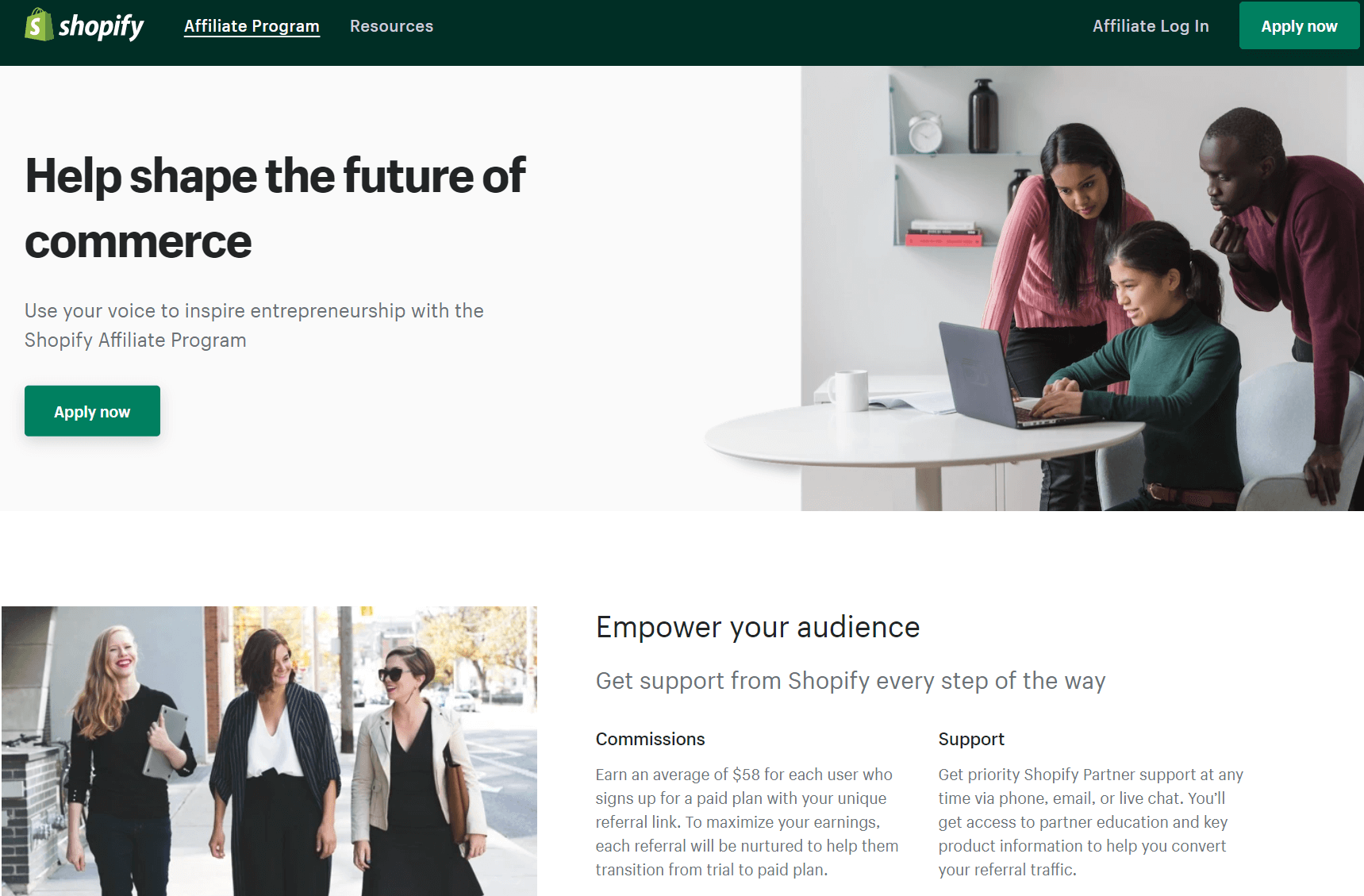
Getting Started With Online Marketing
As you saw, there are a plethora of internet marketing tactics you can use to increase your brand awareness and conversions. The best thing about it, though, is that everyone can use it regardless of industry.
To start enjoying the benefits of this form of marketing you just need a website. Then you can start creating your content, promoting it through social media and email, educating your new customers, and even building a group of skilled affiliates to boost your sales.
Whatever you choose, keep in mind that combining the above strategies is the best way to succeed. So don’t be afraid to experiment with them for better results.
And if you need a great email marketing tool to start learning the ropes, you can sign up for a Moosend account and take the service out for a spin.
The choice is yours so now get ready to take the world of online marketing by storm!
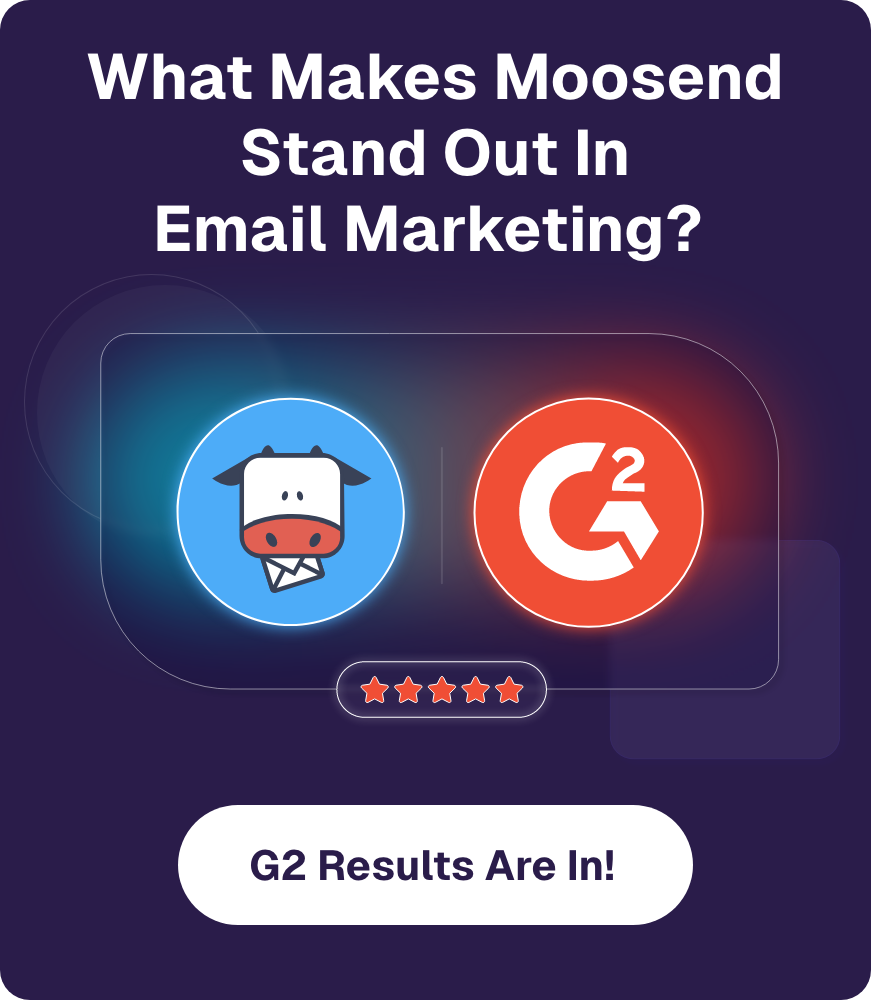
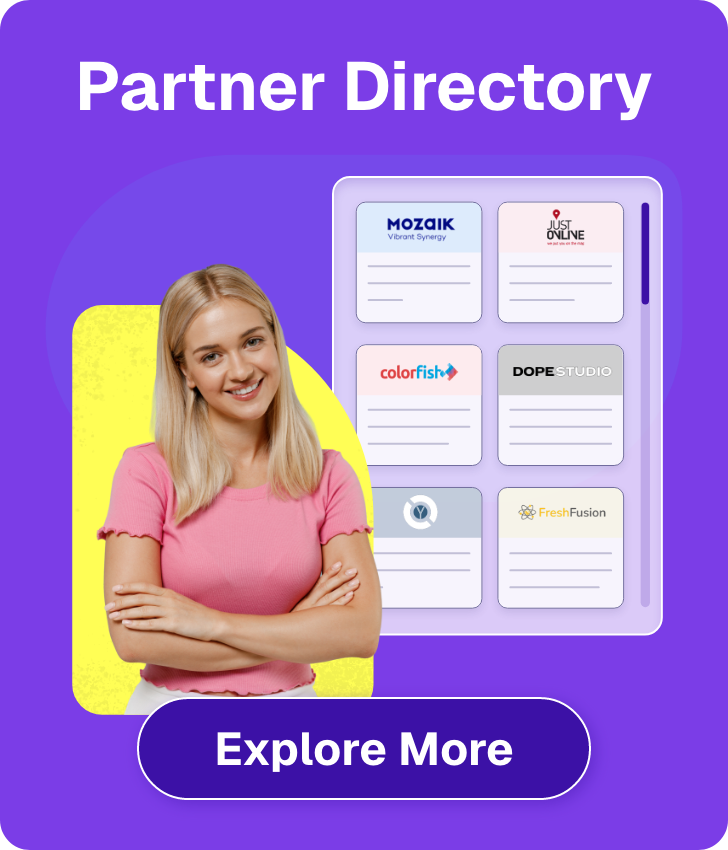


 Published by
Published by

